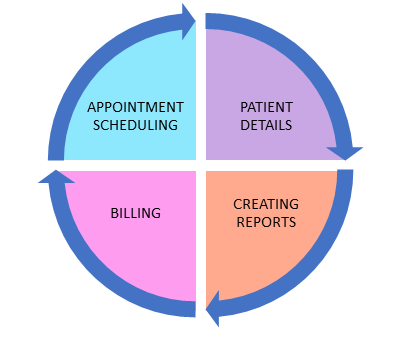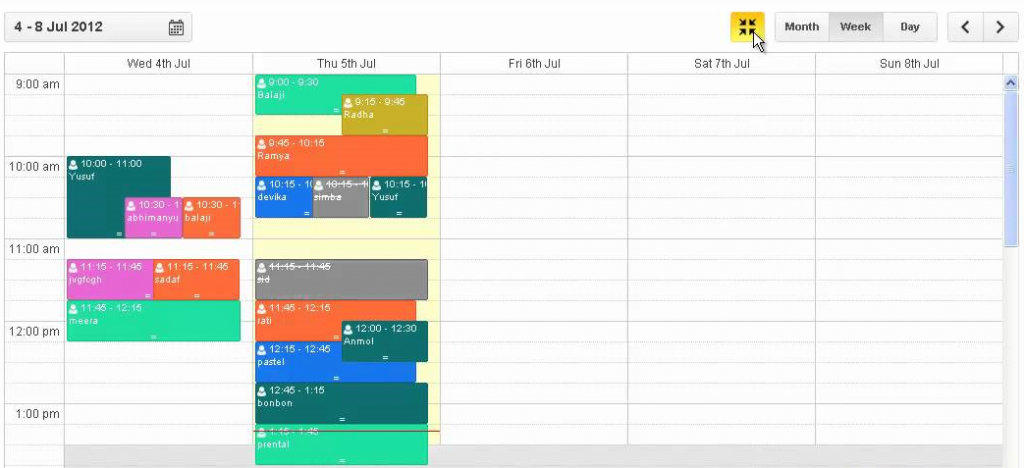A Medical Practice Management Software (PMS) is a type of software designed to manage and perform daily operational tasks within a healthcare organisation. The main purpose of using a PMS within a medical practice is to be effective, efficient and accurate. There are several types of PMS available in the market today, ranging from basic applications to highly sophisticated platforms depending on user requirements. However, a good PMS system typically consists of four main components, namely appointment scheduling, patient information, billing and creating reports.
This article focuses on the Appointment Scheduling system within a PMS.
Appointment Scheduling Systems
The Appointment Scheduling System within a PMS handles all tasks related to patient visits. Scheduling of patient appointments, queue management, availability of doctors, resources and services are all part of this system. The appointment scheduling system is an extremely important part of a PMS, as it caters to the smooth running of the institution by organizing a patient visit along with staff and resource management. The basic requirement of a good appointment scheduling system must allow tasks such as; making appointments, easy search of appointments, re-scheduling, editing and cancelling appointments. It would be extremely useful if this system could also sort appointments based on time and duration of the appointment, category of visit and the resources required for the visit. These additional options make it extremely easy for front office staff to manage appointments efficiently, simply by looking at their calendars. The list of appointments can be shared with all concerned staff and doctors, making it easy for each one to understand their specific tasks for the day. By looking at a single appointment the concerned staff and health practitioner will be able to tell the patient details, appointment time and duration, category of visit, the purpose of visit, treatments to be done, cases of tests required- whether a resource is available or not, the doctor concerned and in some cases billing information too. Therefore, it is essential to have a good appointment scheduling system in place, as it manages a very significant aspect of the PMS being used.
There are various appointment scheduling systems available around the world. Some at no cost at all, whilst others must be bought. Free software can be useful in cases of personal use but for official use-specifically within the medical industry, the software must be purchased. Free software usually tends to be unsafe, not very secure and lacks technological advancement in terms of utility. Purchased software is licensed, secure and free of mal-aware includes useful appointment scheduling tools and provides technical support.
The purpose of digitization is the ease of use, cost reduction and efficiency. However, employee resistance is a major shortcoming when it comes to organisational change. The transition is usually slow and extensive employee training is required. After achieving all of this, if the organisation adopts an inadequate system- all efforts go in vain. Instead of being beneficial to the organisation, it may lead to a disaster. The following section elaborates on the most commonly available appointment scheduling systems and their shortcomings.
The current available Appointment Scheduling Systems:
The calendar view of an appointment scheduling system must be pleasing to the eyes, understandable and useful. The following image is representative of the layout found in most appointment scheduling systems.

Let’s break the layout down:
a. Each day of the week has a column of its own.
b. Each Doctor gets a colour code of their own, in order to identify to whom the appointment belongs.
At first glance, it looks simple and easy. How much more can one need from an appointment scheduling system, than to select the date and book an appointment?
Let us test our hypothesis by answering a few questions
1. Let us say John Doe the patient comes in, and your receptionist needs to simply let the concerned doctor know the patient has arrived. Which Doctor should she approach, Dr. Patel or Dr. Larry Bird? Have a look at the image below.

Both the Doctors have their primary colour orange with a slight variation in the shade. The only way the receptionist will get it right is if she hovers or clicks on the appointment and reads the Appointment Details to identify the Doctor.
2. Let us try another one. Dr. Williamson comes in and asks the receptionist to tell him, what his day looks like today. Today is Thursday. To make it easy, I have put a screenshot which is relatively empty.
Can you answer that for Dr. Williamson? Well first you need to find his colour, it’s green, no, it’s dark green! Okay, and he has … … … 3 appointments. Was that?
3. Well, let us simplify it even further. Let us handle a very basic situation. A patient calls the Clinic and says, I need an appointment with Dr Larry today at 10:00 am.
So the receptionist goes to 10 am and finds there are several appointments already at 10 am. So, 10:00 am does not seem possible. Wait!, let us check the colour code of Dr. Larry. It’s orange! Look at 10:00 am, again. Are any of the appointments at 10:00 am, orange in colour? Well, yes, kind of, there seems to be one that is. Okay, let us check the shade with the shade of orange assigned to Dr. Larry. Getting the idea?
4. So, perhaps the solution is to stop the use of such variations in shade and instead use totally different colours. That sounds doable. So if the clinic has 1, 2 or 3 Doctors, should be a breeze, RGB ie just use red, green, or blue. More than 3? Sure there are many more colours, yellow, black, white, grey, purple, brown, pink, … This sounds like lose lose situation. As the number of doctors in a clinic increases, the options get fewer and fewer. More importantly, who is looking forward to learning a colour table y heart, simply to figure out who the appointment belongs to?
5. Okay, how about being able to categorize appointments by the reason. Example: Initial Visits are usually longer, entail history taking, more work involved and hence need a bit more attention. Followups are shorter. So, can we use 2 totally different colours to make the Initial Visits stand out from Followup Appointments? Well in the view above, the colours are already taken up by Doctors. Such systems often tend to give you a feature of seeing appointments by Doctor or by Category. So fine, you can switch to the Category view in order to see all initial visits and follow-ups clearly.

But what if you wanted to see all Initial Visits for Dr. Williamson – well, you are asking for too much, is probably the answer you should prepare to hear from Tech Support 🙂
6. Now, what about booking resources such as rooms, laser equipment or dialysis machines? These resources are common to the clinic and hence scheduling them by linking them to the appointments that need them, is in fact important. As you may recollect, the appointment screen is split into columns by date. Hence, it is not possible to split them further into a Resources view.
Do you still think this kind of scheduling system is easy and right for your Clinic? The very idea of using colours to identify the Doctor, and then look back at appointments to spot that colour is like having to call the yellow pages to get the phone number of your best friend, before calling him. So, for each time before making a call, you need to call someone else to get the code to dial out, how often would you want to use your phone?
There is a panacea to all the ills mentioned above. I will explain and show you the perfect appointment scheduling system, that addresses each of the issues listed above, very, very, very easily! And yet, it will be enterprise-grade, secure and powerful.

I love writing, especially about health tech :). Feel free to reach out to me with your comments and feedback at rachanas@emrmagazine.com


